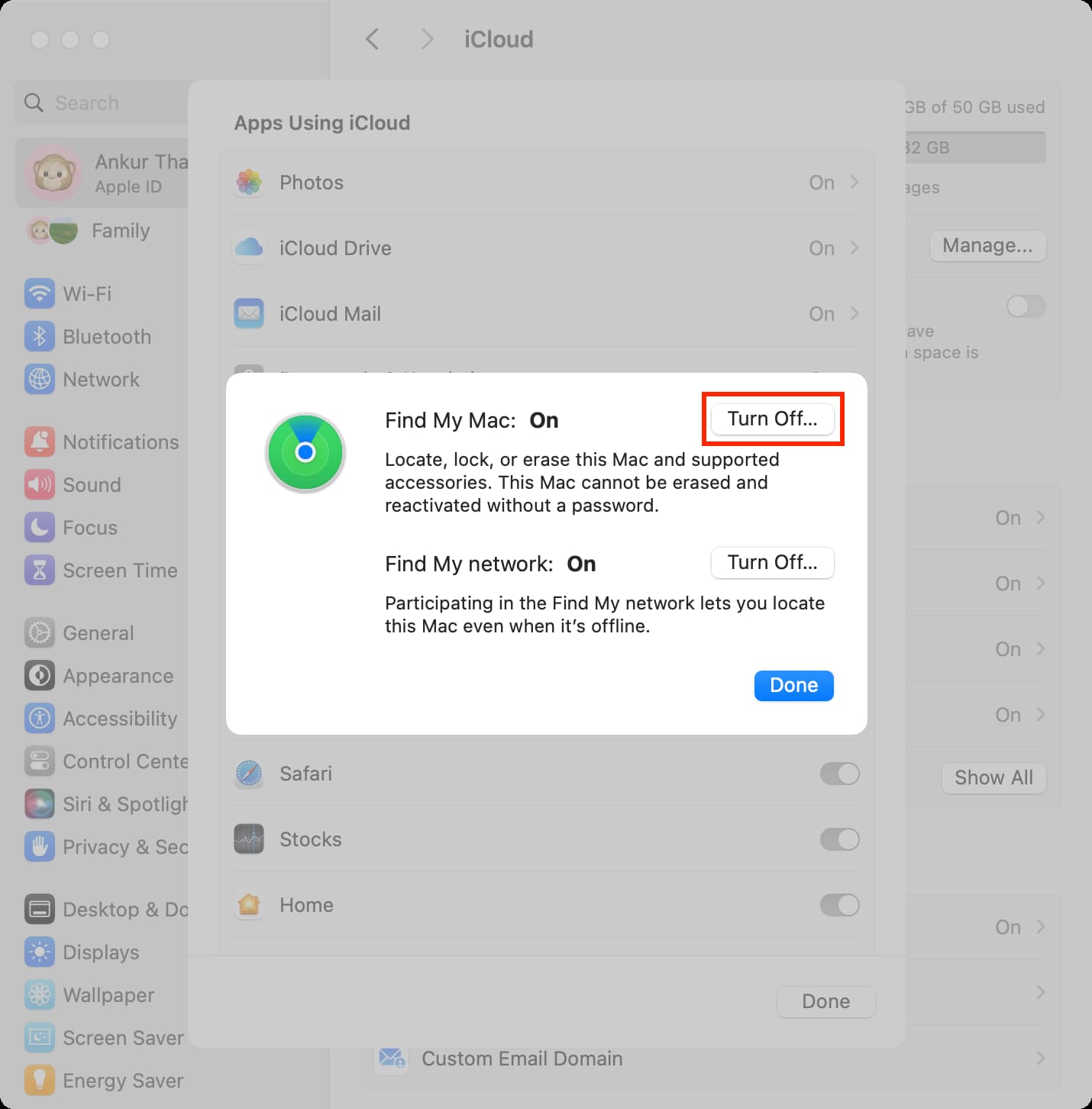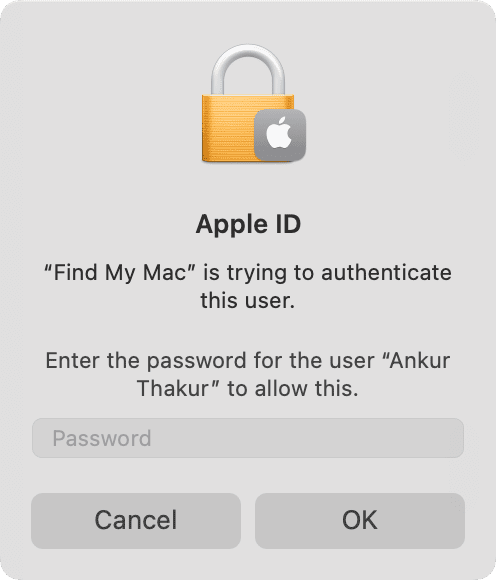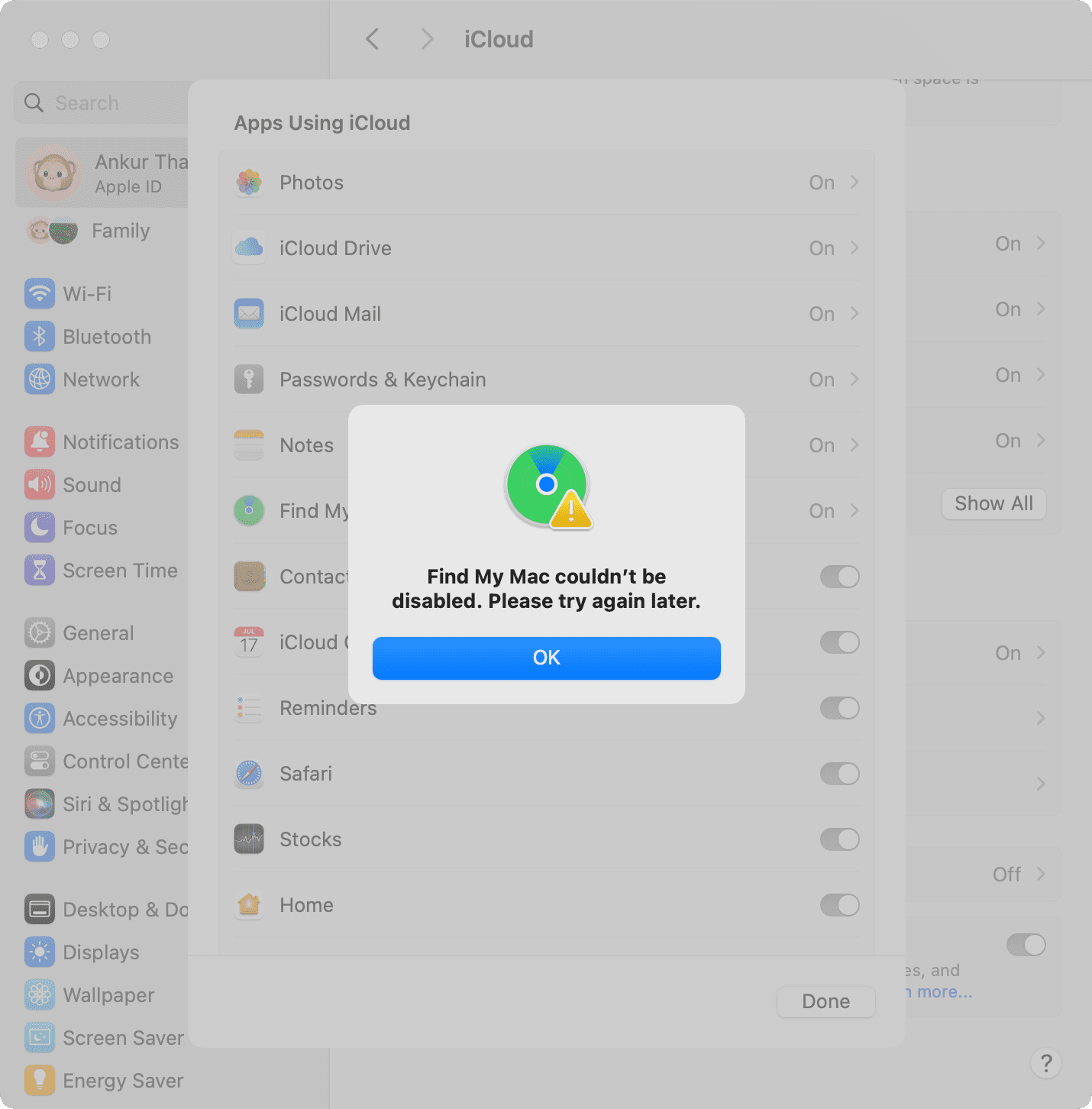In this tutorial, we’ll explain why you may want to disable Apple’s Find My service on your iPhone, iPad, and Mac, along with the steps to do so from the device itself or remotely if you don’t have the device with you.

When you must turn off Find My
Find My is a very important feature, so much so that it’s enabled by default the moment you set up your iPhone, iPad, or Mac using your Apple Account.
Find My lets you know where your misplaced or stolen device is, play a sound even if the phone is on mute, get directions to the lost device, display a lock screen message so the finder can reach you, and remotely erase it. Furthermore, Find My Activation Lock prevents anyone else from using your device, even after they have forcibly erased it using Recovery Mode.
Given all these benefits, you must never turn off Find My, except for a few situations mentioned below:
- You’re selling, gifting, giving away, or trading in your iPhone, iPad, or Mac. In this case, you MUST turn off Find My because if you don’t, the next person can’t set up and use the device because of Activation Lock.
- Inversely, the above point is also true when you’re buying a second-hand Apple device, where you must ask the previous owner to turn off Find My.
- You’re sending your device to Apple for repair.
- You want to restore your iPhone or iPad in Finder or the Apple Devices app.
- Some third-party iTunes alternatives that claim to help you restore your iPhone or install old versions of iOS apps using IPA files may only work after you turn off Find My. However, I’d recommend you stay clear of such Mac or Windows programs.
Caution: Scammers and thieves may reach out to you, asking you to turn off Find My remotely for your misplaced iPhone. They may try to fool, scare, or threaten you with absurd claims like having a hold on your private data. Never turn off Find My iPhone at the behest of anybody else!

Turn off Find My if you have the device with you
This feature is device-specific and doesn’t sync via iCloud. As a result, it’s only switched off for the device on which you follow the steps.
iPhone or iPad
1) Open the Settings app and tap your name at the top.
2) Tap Find My.

3) Now, tap Find My iPhone or Find My iPad from the top.
4) Then, turn off Find My iPhone. Note that this option will be grayed out on iPhone if you’ve enabled Stolen Device Protection. To address this, turn off Stolen Device Protection first, which may have a waiting period of an hour. Then, return here and turn off Find My.

5) Finally, enter your Apple Account password and tap Turn Off to disable Find My on this device.

Mac
1) Open System Settings and click your Apple Account from the top left.
2) Now, go to iCloud and click the See All button.
3) Click Find My Mac from the list of apps and services using iCloud.
4) Click the Turn Off button next to Find My Mac. Then, type in your Apple Account password and follow the instructions.

5) After this, you may also see an Apple ID alert asking you to authenticate by entering your Mac’s password (not the Apple Account password). Make sure you do that.

Do you see an error?
If you can’t turn off (or turn on) Find My on your devices, here are some troubleshooting tips to help:
- Ensure Wi-Fi, cellular data, or Ethernet is working properly.
- Turn off the VPN if you’re using one.
- Force quit the Settings or System Settings app and retry.
- Restart your device and retry.
- Make sure you’re using the correct Apple Account password.
- Retry after a couple of hours.
- If nothing helps, reset network settings and then retry.

Turn off Find My remotely if you don’t have the device with you
There are a couple of ways you can disable Find My on your device without having it in hand. But before you begin, make sure the device is turned off. If you sold it to someone you know, ask them to turn it off. Or, if you traded it in, you likely (hopefully) turned it off before shipping it.
You cannot remove a device that’s powered on and connected to the Internet. In this case, the “Remove” button won’t show up; it will be grayed out; or you’ll get an error message after tapping it.

Using iCloud web
1) Visit iCloud.com/find and sign in using your Apple Account. Tip: Use Safari to sign in quickly with Face ID, Touch ID, or device passcode.
2) Select your device in the All Devices section.
3) Click Remove, and you’ll receive a confirmation message for the removal of the device. Click Remove once again.

Using the Find My app
If you happen to use another Apple device, you can use the Find My app or the Settings app on your iPhone, iPad, or Mac to disassociate your other device from your Apple Account.
1) Open the Find My app, sign in if needed, and go to the Devices tab.
2) Now, tap to select the device and then tap the Remove option at the bottom.
3) You’ll receive a confirmation message for the removal of the device. Tap Remove.

Find My is a convenient feature when you need it, but you must remember to disable it before your device leaves your home and is used by someone else. At least you have a couple of options to turn off the feature remotely.
In case these steps don’t help, erase the device remotely using one of the above methods and then remove it from your Apple Account. At last, if nothing helps, you’ll have to enter the Activation Lock password manually on the device when it’s in your hands.
Read next: How to check Activation Lock before buying a used iPhone, iPad, Apple Watch, or Mac